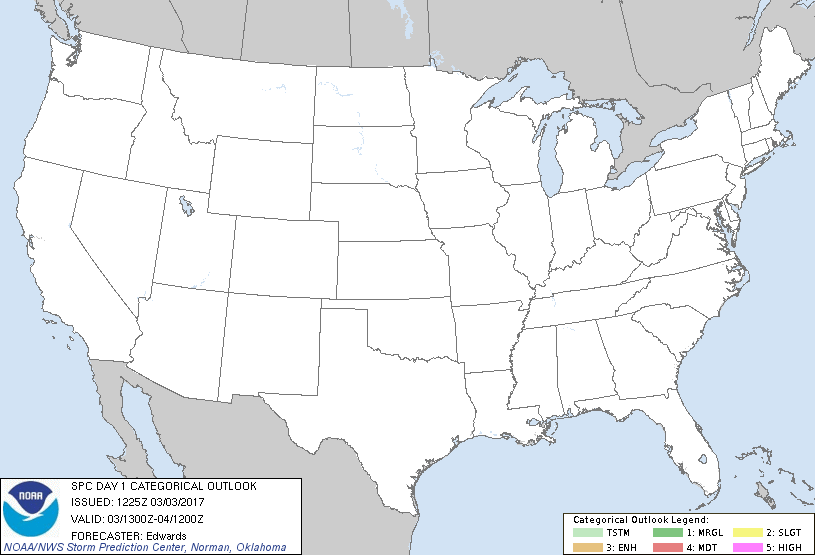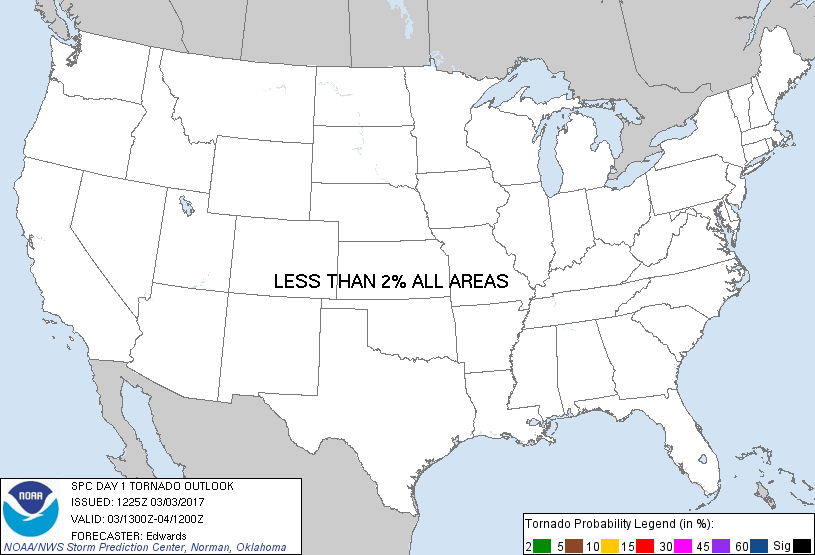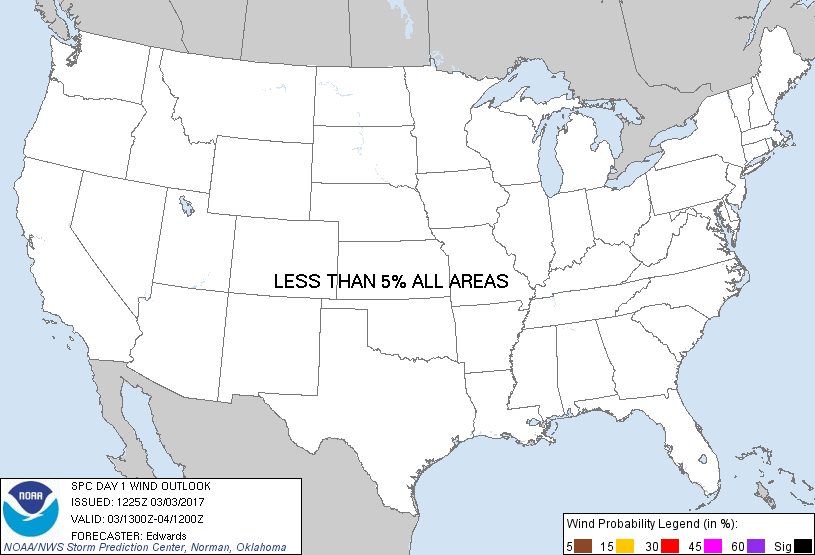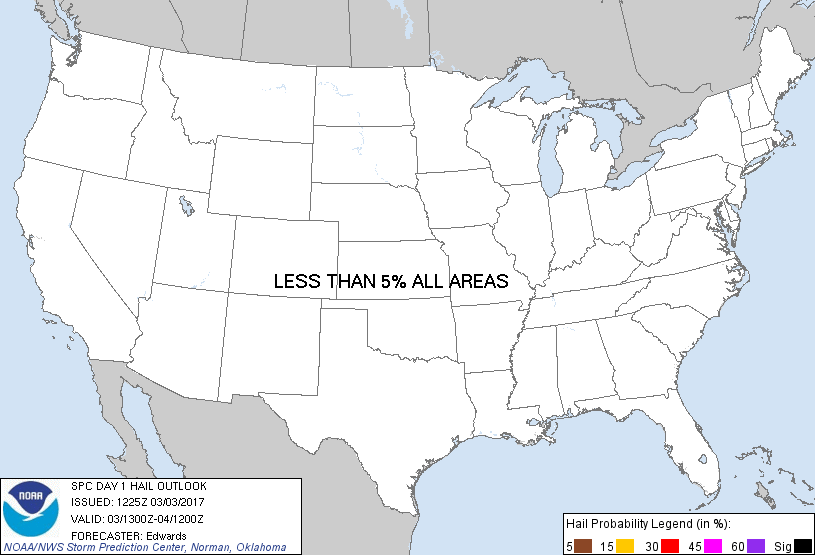SPC AC 031225
Day 1 Convective Outlook
NWS Storm Prediction Center Norman OK
0625 AM CST Fri Mar 03 2017
Valid 031300Z - 041200Z
...NO THUNDERSTORM AREAS FORECAST...
...SUMMARY...
No thunderstorms are forecast across the contiguous United States.
...Synopsis...
A highly amplified, yet progressive, upper-air pattern will continue
through this period. One synoptic-scale trough was located from a
cyclone over James Bay southward across southern ON, the central/
southern Appalachians and GA, and is forecast to move mostly
offshore from the Atlantic Coast by 12Z, when the parent 500-mb low
will have migrated to Maine. The associated surface cold front has
cleared FL and much of the Gulf of Mexico. Low theta-e in the
post-frontal, continental-polar low-level air mass will preclude
thunderstorm potential from the Rockies eastward.
Upper ridging will move eastward from the Rockies across the
central/northern Plains, as a northeastern Pacific trough digs
southeastward from the eastern Gulf of AK. Although the main trough
will stay offshore until after this period, a couple of leading,
smaller-scale shortwave troughs and associated vorticity maxima may
cross the WA coast overnight. Accompanying large-scale DCVA/ascent
and steepening of low/middle-level lapse rates may contribute to
shallow CAPE along the coast overnight, atop the marine air.
Forecast soundings suggest very weak buoyancy may extend into
midlevel temps colder than -20 C. As such, isolated lightning
cannot be ruled out, but the potential appears too conditional and
sparse for a general-thunder area at this time.
Meanwhile, a complex, broad, southern-stream perturbation -- now
evident in moisture-channel imagery offshore from southern CA and
southward over the Pacific -- should weaken and move across both
Baja and parts of Sonora. This will occur as heights fall over much
of the Pacific coast, ahead of the aforementioned northern-stream
trough. Moisture and instability should remain too feeble for
thunderstorms.
..Edwards.. 03/03/2017
CLICK TO GET WUUS01 PTSDY1 PRODUCT
NOTE: THE NEXT DAY 1 OUTLOOK IS SCHEDULED BY 1630Z
|



